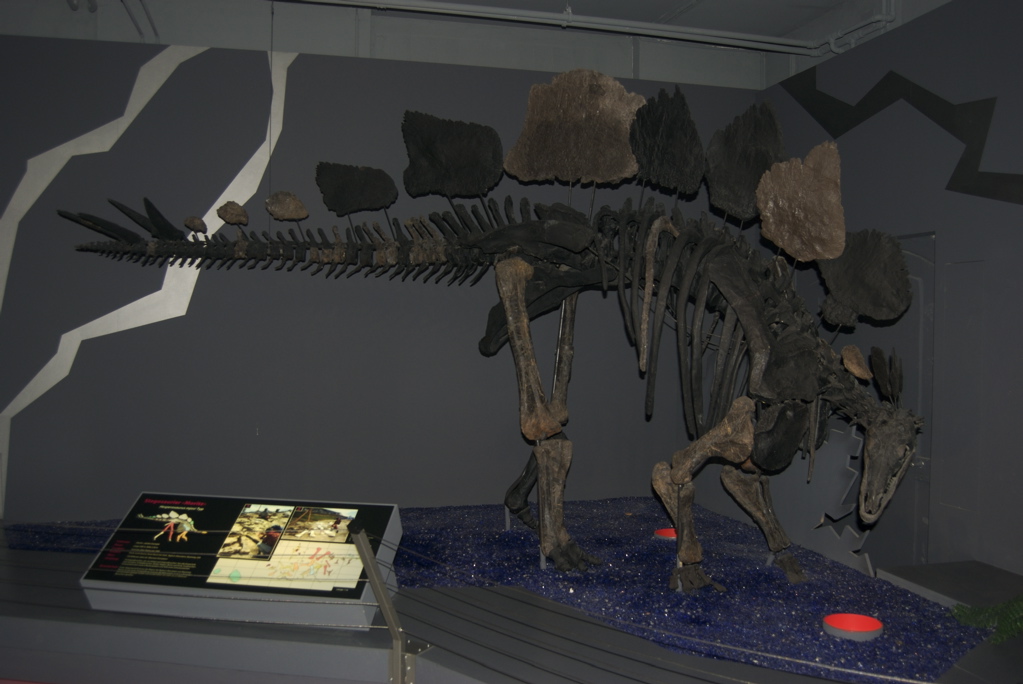Reproduction and Growth
The Stegosaurus stenops reproduced sexually, requiring a male and female for fertilization to occur (Carpenter 1999). These dinosaurs had their reproductive organs in a cloaca, and the males may have used colors on their backplates as a mating display. They layed eggs like many other dinosaurs, and the egg's shell consisted of different layers, a calcite structure, and pore canals (Carpenter 1999). Some scientists suggest that different dinosaur eggs varied in thickness, which implies that this represented different species. Stegosaurus prefered vast open land to lay their nests in; the nests could have been just dirt or dirt including vegetation for warmth. Laying eggs on land avoided the dangers of the aquatic larvae stage, the drying up of ponds, and the dangers of predators; eventually, a hard shell and protective membranes came about to further protect the embryo from the dryness of the atmosphere. These organisms layed only a handful of eggs instead of hundreds at a time (Carpenter 1999). The Stegosaurus had three growth stages: sub-adult stage, adult stage I (also known as young adult), and adult stage II (also known as old adult). Stegosaurus eggs hatched around 3kg, and in adulthood the dinosaurs could have weighed up to 5 tons. Now, let us talk about the role of the back plates in the importance of reproduction and different stages of the Stegosaurus life cycle.

The back plates of the Stegosaurus may have played an
important role in mating displays
and body temperature regulation. These plates exhibited continuous growth. The back
plates in juveniles were thin, containing small vascular canals, and were made up of mostly cancellous bone.
Young adults had thin cancellous bone
in their back plates too, but they possessed large and
complex tubular canals in that tissue. Old adults
possessed thick cancellous bone with large canals and complex
networks. The complex vascular canals found in the back plates
of the Stegosaurus suggested to Hayashi et al. that
the plates exhibited a fast growth rate. The difference in the back plate
bone between these stages was that the cortal bone became thicker as the
dinosaur grew older. The spikes of this dinosaur also differed in different
life stages.
Old adults possessed spikes with a more rounded shape than younger individuals. The sub-adult spikes possessed
sharper angles than in other age classes. Young adult spikes were
similar to the sub-adult externally, but with a more worn down
edge of the spike. It was also
discovered that the plates and spikes possessed a covering of
keratin, which suggests that the inner and outer canals played a
role in supplying the keratinous sheath (Hayashi et al. 2010).
Take a look at the Interactions the Stegosaurus had on this page
References
Home
MultipleOrganisms.net
UW-La Crosse